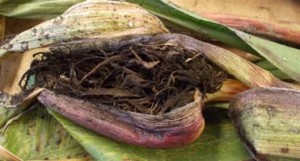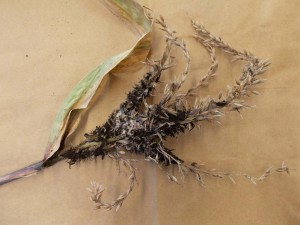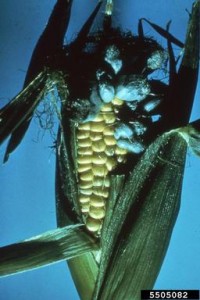When you don’t see a crop disease for decades, it’s easy to forget it even existed. And then to find it at an unlikely time of year — all we can say is “Farmers and gardeners, check your corn crops.” Just — well, just because. Indeed, that we found head smut at all proves the value of that core IPM tactic: careful, consistent scouting.
Head smut on corn (Sphacelotheca reiliana) can be seedborne. But it’s wind and rain that normally move it around, dropping its spores hither and yon. (Your tillage equipment can carry it too.) Head smut enters plants only through the soil — and can stay viable below ground for several years. While smutty ears aren’t toxic, neither are they nutritious once mature. Though the acids in silage will kill spores, if fed as grain they remain viable in the manure. So come the time you spread that manure — well, you catch our drift.


The disease begins at the seedling stage, but the symptoms are usually hard to see until head smut erupts, seemingly out of nowhere, replacing the tassels or ears with masses of dark brown fungal spores. Those spores hitchhike around on wind or rain, so they won’t damage the rest of your corn this year. But next year? Watch out!
IPM tactics for how to cope:
- plant resistant hybrids (many are; check with your dealer or search online)
- plant early: spores don’t germinate when it’s cool
- keep soil nutrients at optimal levels
- use long rotations to other crops — these spores are long-lived
- consider using fungicide-treated seed
- clean tillers or cultivators before entering another field
- home gardeners, cut out the “boils” before they erupt. Got a late-season crop still awaiting harvest? Check out this guide.
BTW, don’t confuse head smut with common smut (Ustilago maydis). They’re two different animals.

Many thanks to NYS IPM’s Kenneth Wise for the material for this post.
Head smut photos courtesy of Jaime Cummings, Cornell University. Common smut photo courtesy of Margaret McGrath, Cornell University.